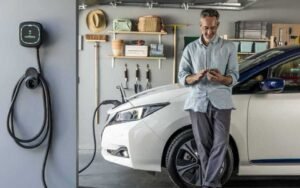A beautiful, lush lawn is the foundation of great curb appeal, but choosing between sod and seeding can be a tough decision. Homeowners in Saratoga Springs who want a green, healthy lawn need to consider factors like cost, maintenance, and the best grass types for Utah’s climate. Both methods have their pros and cons, so understanding the differences can help you decide which is right for your property.
Contents
The Pros and Cons of Sod Installation
Sod is a quick and efficient way to get a fully grown lawn with minimal wait time. It consists of pre-grown grass that is rolled out like a carpet, instantly giving your yard a finished look.
Pros:
- Instant Results: Unlike seeding, sod provides an immediate lawn that looks established from day one.
- Erosion Control: If you have a sloped yard, sod helps prevent soil erosion more effectively than grass seed.
- Less Maintenance Upfront: While sod still requires watering and care, it generally has fewer issues with weeds compared to newly seeded lawns.
Cons:
- Higher Cost: Sod is more expensive than seeding due to the labor and materials involved in growing and installing it.
- Limited Grass Variety: The types of grass available in sod form are more limited compared to the options available with seeding.
- Requires Proper Installation: Sod must be laid correctly with tight seams and immediate watering to ensure successful root establishment.
The Pros and Cons of Seeding
Seeding is a cost-effective way to establish a lawn, but it requires patience. Spreading grass seed over prepared soil allows the grass to grow naturally, but the process can take several weeks or even months before reaching full coverage.
Pros:
- More Affordable: Seeding costs significantly less than sod, making it a budget-friendly choice.
- Greater Variety of Grass Types: You can choose specific seed blends that work best for your yard’s sun exposure, soil type, and foot traffic.
- Stronger Root Development: Since the grass grows naturally from seed, it can develop deeper roots, leading to a more resilient lawn.
Cons:
- Longer Establishment Time: Unlike sod, a seeded lawn takes time to fill in, and it may take several months to reach maturity.
- Vulnerability to Weather Conditions: Heavy rain, wind, or foot traffic can displace seeds before they fully germinate.
- More Frequent Watering Needed: To ensure proper germination, seeded lawns require consistent watering in the early stages.
Best Grass Types for Saratoga Springs Lawns
Whether you choose sod or seed, selecting the right grass variety for Utah’s climate is essential. Cool-season grasses, such as Kentucky bluegrass, tall fescue, and perennial ryegrass, tend to perform best in Saratoga Springs due to their ability to withstand temperature fluctuations.
- Kentucky Bluegrass: Popular for its rich green color and dense growth, but it requires more water.
- Tall Fescue: Drought-resistant and low maintenance, making it a great choice for homeowners who want a durable lawn.
- Perennial Ryegrass: Quick germination makes it ideal for overseeding and repairing patchy areas.
Which Option is Best for Your Lawn?
The decision between sod and seeding comes down to your budget, timeline, and how much maintenance you’re willing to take on. If you want a lawn right away with minimal effort, sod is the best choice. However, if you’re looking for a cost-effective solution and don’t mind waiting for grass to grow, seeding might be the way to go.
Whichever method you choose, proper care is essential. Regular watering, mowing, and fertilization will keep your lawn looking lush and green for years to come. For those looking to enhance their Saratoga Springs landscaping, investing in professional sod installation or expert seeding services can ensure the best results for a long-lasting, healthy lawn.








